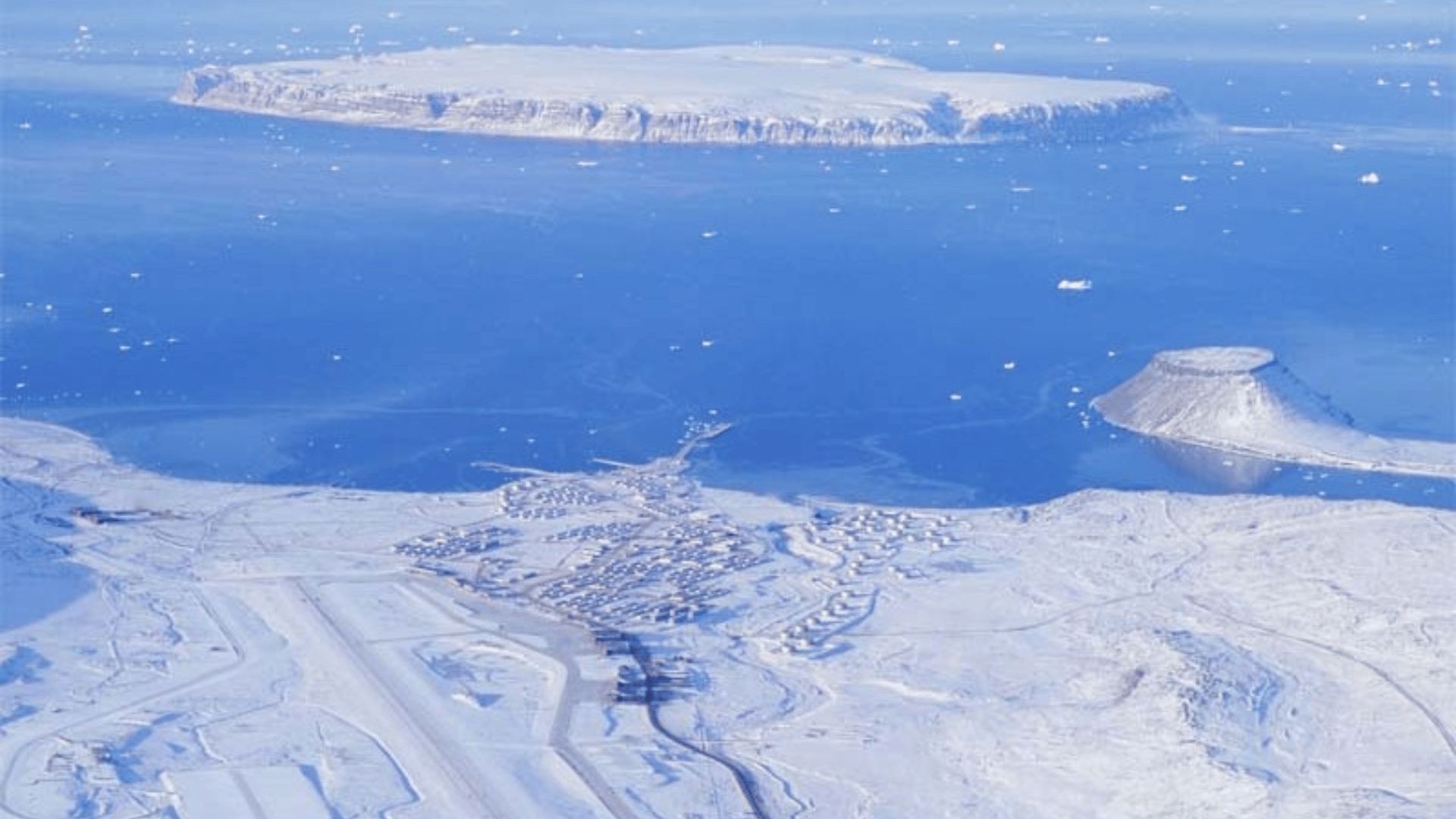When most people imagine space missions or defense systems, they picture glowing rocket trails in the sky or satellites drifting silently through space.
Amid endless snow, fierce winds, and months of polar night, a remote base in Greenland operates around the clock.
It watches the skies, tracks signals, and supports missions that keep global communication and security running smoothly.
Few people have ever seen this place up close, but its work affects nearly everyone on Earth. This is Pituffik Space Base, one of the most isolated and important installations on the planet.
What’s the Story Behind Pituffik Space Base?
Pituffik Space Base began as Thule Air Base in 1951 during the Cold War. It was built to strengthen U.S. strategic Arctic capabilities.
The base’s construction required relocating over 130 Greenlandic Inuit residents. These families were forced to move from Pituffik and nearby Dundas.
They were sent more than 130 kilometers north to Qaanaaq. There, they endured months living in tents through the harsh polar winter.
Permanent housing was only completed after several difficult months. Compensation for the relocation was delayed for many years.
The event remains a sensitive source of grievance for Greenlandic communities. Despite this, the base grew into a key part of North American defense.
Where is Pituffik Base Located?

Image Source: Wikipedia
Pituffik Space Base sits in northwestern Greenland, approximately 750 miles north of the Arctic Circle, in one of the world’s most remote locations.
The base is positioned on Greenland’s rugged northwest coast at coordinates 76°31′52″N 68°42′11″W, making it an ideal site for monitoring the Arctic region and tracking objects in space.
Despite being located on Danish territory, the facility is operated by the United States Space Force’s 821st Space Base Group under long-standing agreements with Denmark and Greenland.
Life here is shaped by the extreme Arctic environment, where temperatures can plunge to minus 40 degrees Fahrenheit, and the winter brings months of total darkness.
This isolation and harsh climate make Pituffik one of the most challenging yet strategically important bases in the world.
Understanding the Role of Pituffik Base
Pituffik Space Base performs several critical tasks that keep space operations and global defense systems running safely and efficiently:
- Satellite Tracking: Monitors satellites, space debris, and other orbiting objects to prevent collisions and protect vital technology.
- Missile Detection: Provides early warning of missile launches and potential threats approaching North American airspace.
- Global Communication: Maintains secure contact with military units and coordinates responses to worldwide security situations.
- Scientific Research: Conducts studies on Arctic conditions, climate change, and space weather that impact satellite systems.
- Specialized Training: Prepares military personnel for Arctic survival, operations, and advanced space monitoring techniques.
- Logistics and Maintenance: Supports visiting aircraft, supplies, and personnel working in the extreme Arctic environment.
- Strategic Evolution: Once a Cold War outpost, Pituffik has transformed into a modern hub for international space and defense security.
Why is this Space Base Important?

Image Source: The Guardian
Pituffik is the first line of defense for North America against space and air threats.
Its strategic Arctic location allows monitoring of the region as melting ice opens new shipping routes and alters geopolitical dynamics.
The base defends satellites critical for GPS, weather forecasting, and internet communications. It also plays a key role in detecting space debris and countering missile threats.
Without Pituffik, detecting problems in space or responding to emergencies impacting millions would be far more difficult.
Global and Local Significance of Pituffik Space Base
Pituffik Space Base plays an essential role in both international defense and local Arctic development. Its presence connects global security efforts with community growth and environmental responsibility.
| Aspect | Global Impact | Local Impact |
|---|---|---|
| Security & Defense | Enhances Arctic security and strengthens collaboration among the U.S., Denmark, and Greenland. | Provides stability, jobs, and training opportunities for local residents. |
| Cooperation & Culture | Promotes defense cooperation and shared mission goals across allied nations. | Encourages cultural exchange between international personnel and Greenlandic communities. |
| Research & Environment | Supports global Arctic climate and environmental research. | Aids local monitoring of weather and environmental changes. |
| Technology & Infrastructure | Expands technological capabilities and infrastructure among partner nations. | Brings modern equipment, communication systems, and improved facilities to the region. |
| Sustainability | Ensures responsible operations to protect the fragile Arctic ecosystem. | The project balances development with the preservation of local wildlife and natural landscapes. |
Conclusion
More than just a base, Pituffik represents a crossroads of cutting-edge defense, scientific discovery, and international partnership.
In a rapidly changing Arctic landscape marked by geopolitical uncertainty and emerging threats, its presence secures vital communication networks and early warning capabilities essential to global stability.
As innovation and collaboration deepen, Pituffik stands poised to remain a cornerstone of security and environmental stewardship amid some of the world’s most challenging conditions.


















